New Hampshire Profiles
March 1963
Hampton at the turn of the century had much to recommend it – a combination of ocean, shoreline and quiet village charm. Men lived off the sea, created unusual haystacks on the marshes, and built tall multi-roomed homes. Vast stretches of sand and sea brought a new brand of tourism to New Hampshire, and with it came the imposing hotels and the latest in motor cars. Most of the scenes on these pages are gone now, but their memory is still vivid in Hampton today.
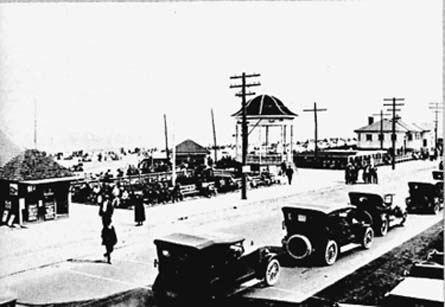
The tourist business boomed in Hampton Beach in the early twenties. At far left of photograph an ancestor to the snack bar advertised tobacco and cold drinks. Ticket office, bandstand and police station are gone now.
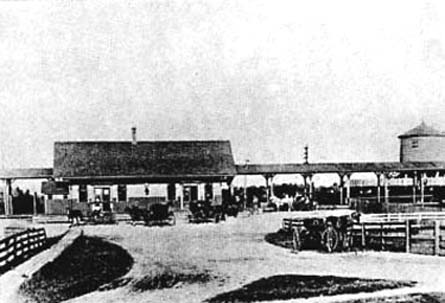
The railway station about 1900 where hundreds of tourists took carriages and trolleys to the beach. The station remains much the same today, but roofed walkway and water tower are gone.

Lafayette Road in downtown Hampton. Store buildings on right still stand, were originally moved from west of road, a block away.
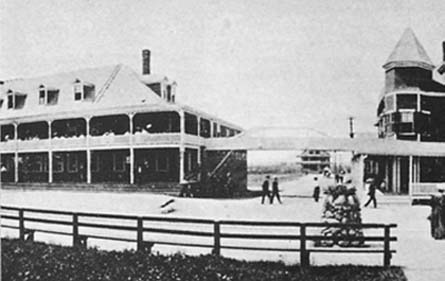
The Casino and Ocean-Houses Hotel around 1900. Note second-story walkway, built to guests could stroll without descending to the street. The Casino housed the Bijou Theatre, Convention Hall and an Opera House where musical shows were held. The walkway was torn down, but buildings today retain much of early flavor.
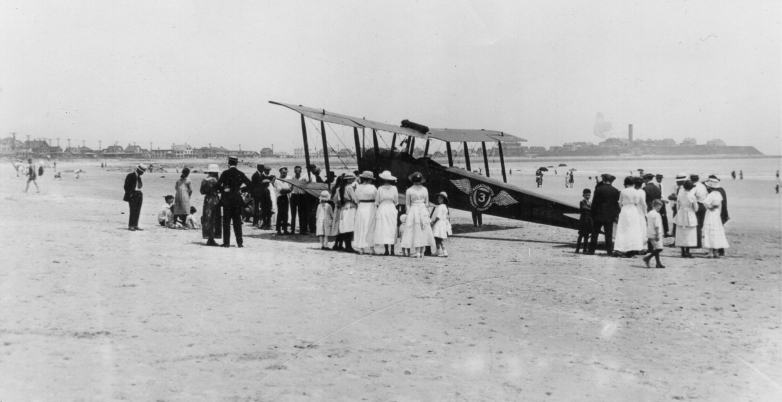
In the early twenties an enterprising pilot named Fogg from Concord provided his own tourist attraction, flying sight-seers the length of the beach. There was no airport then, so he simply kept his plane on the beach for the season. Before the machine era, the sandy stretch was a precursor to the drag strip, where horse races could be held undisturbed.
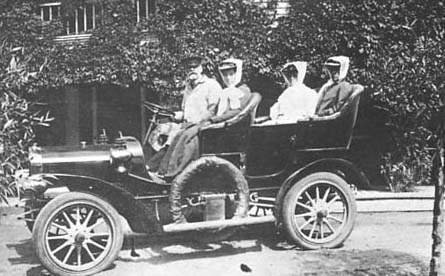
Autos and their owners were something to behold when this picture was taken in front of the Whittier Hotel sometime between 1905 and 1910. Early cars had the right-hand steering wheel or center stick until about 1910, as a result of European influence in designs.
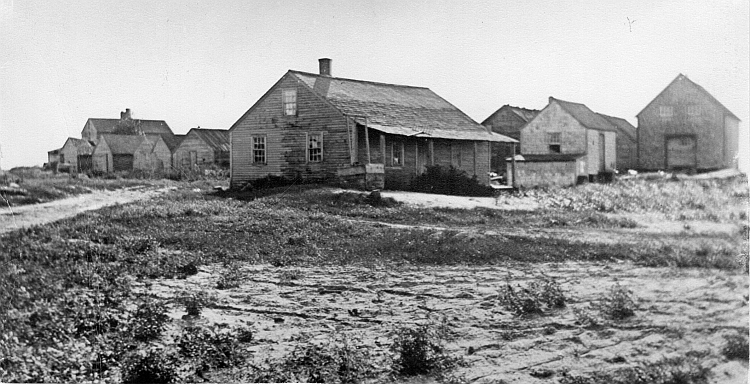
Fish houses on North Shore where local fishermen stored gear and bait. Some have indoor fish privies (a hole in the floor) into which discarded fish heads and tails were thrown and saved for fertilizer. Old Moulton house in foreground, also called Indian House after one-time resident, later became fish store.
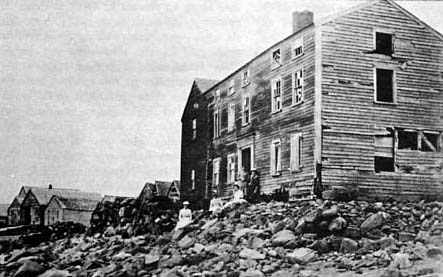
Abandoned Abner Mace house at turn of the century functioned as shelter for fishermen who gathered to bait long trawl lines with pogies and alewives, small local fish and good bait for mackerel and herring. Lines were then coiled and stored in halved wooden barrels. An old stove in the house provided all the camaraderie of an inland country store.
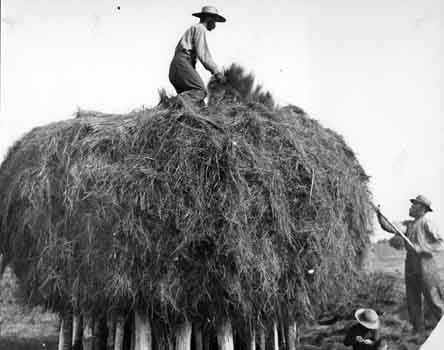
Haying the salt marshes is almost a lost art. Salt hay carefully forked on high stakes did not hold water or freeze in winter. When the marshes froze, farmers had easy access to loose hay for oxen and young cattle. Gardeners still use weed-free hay for mulching.